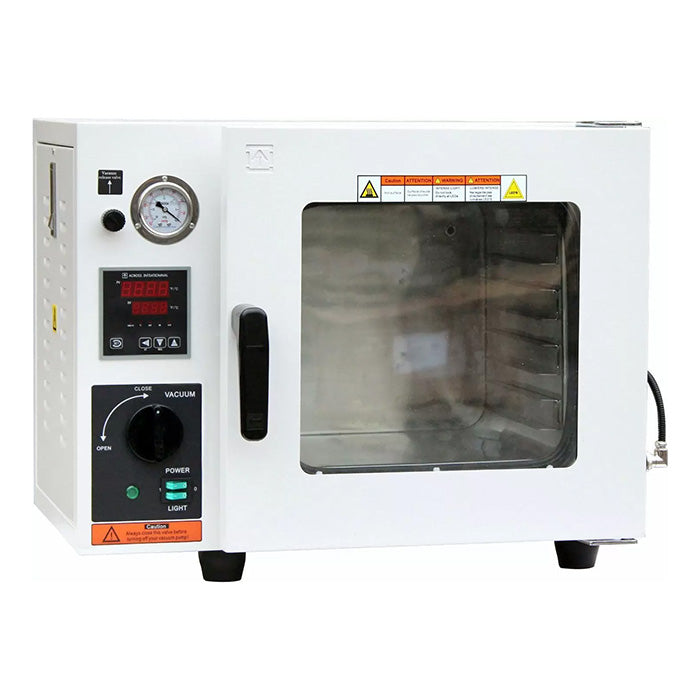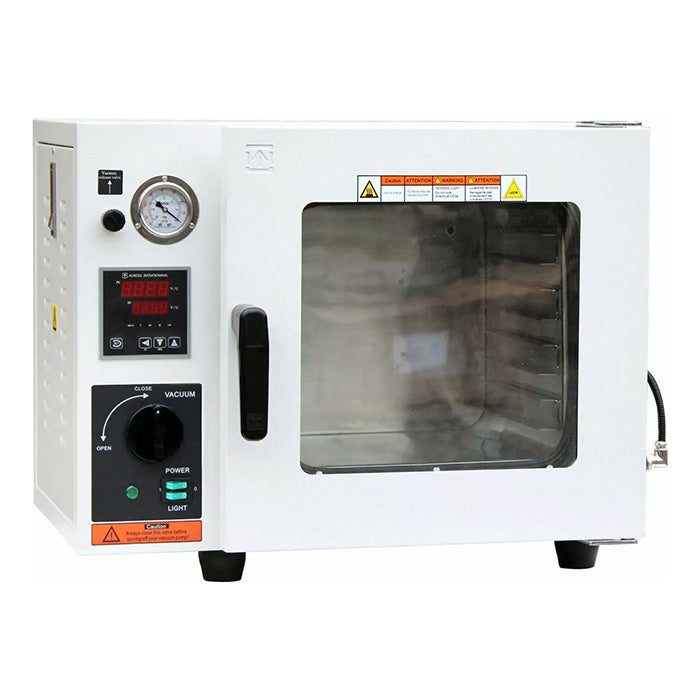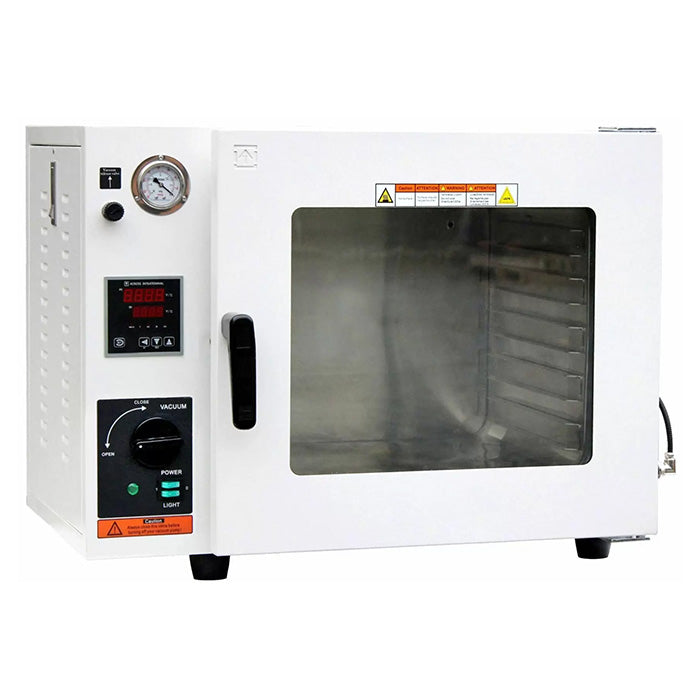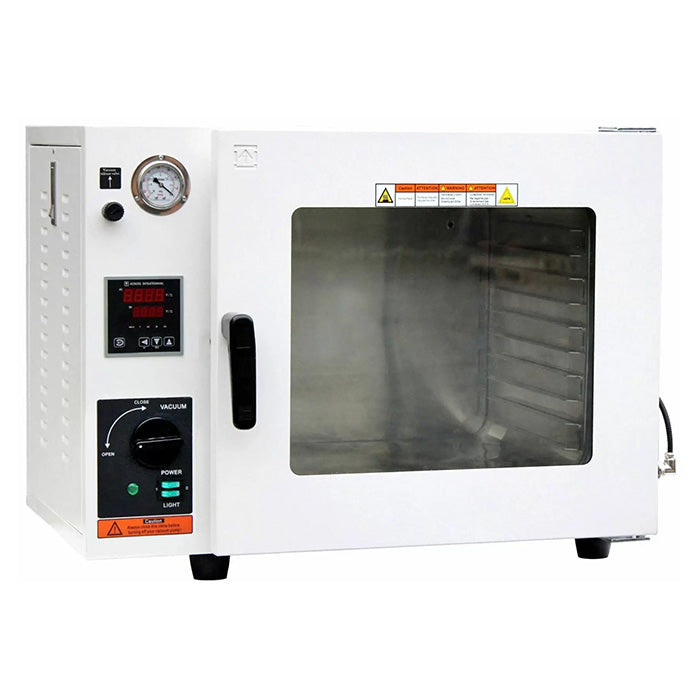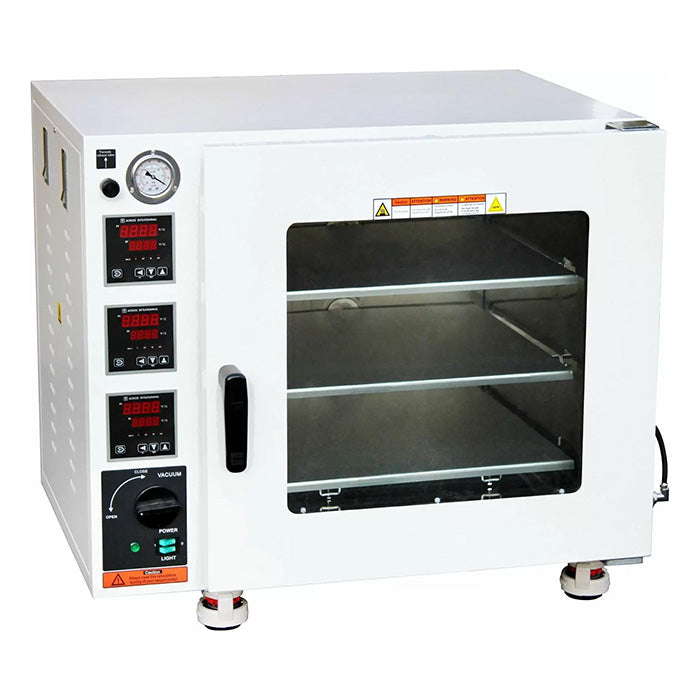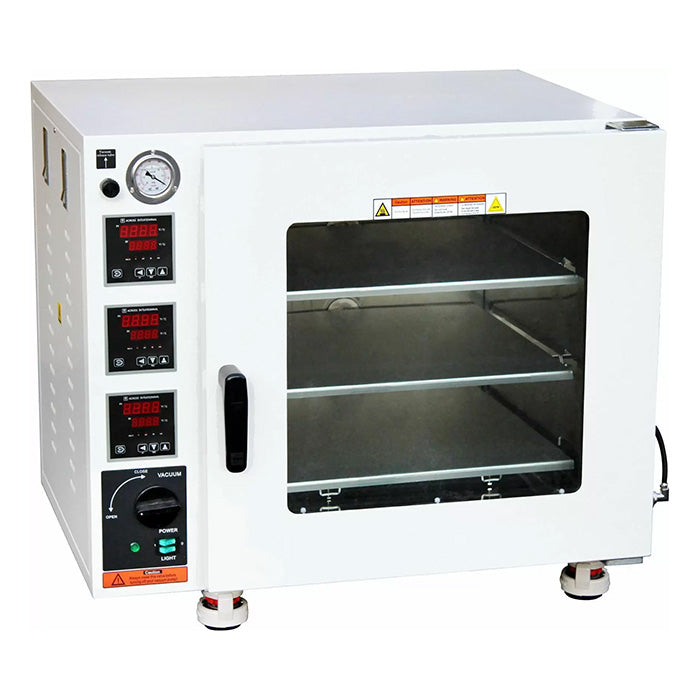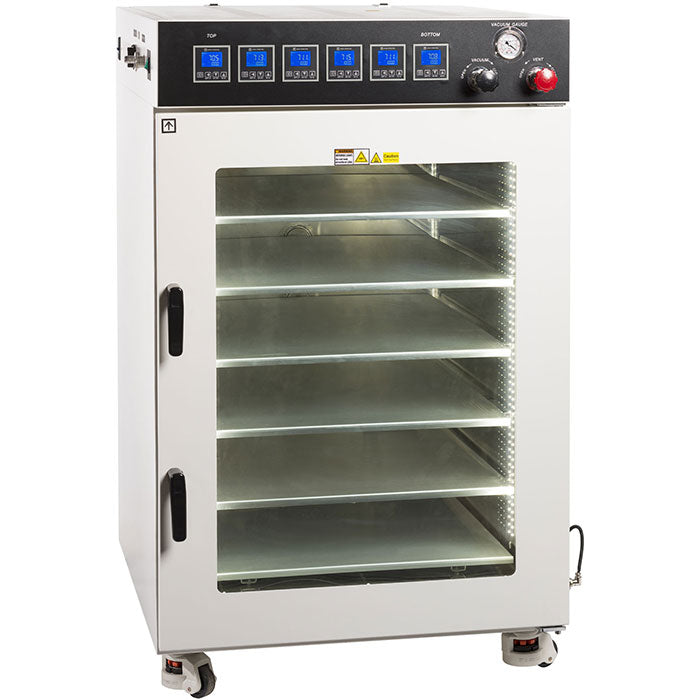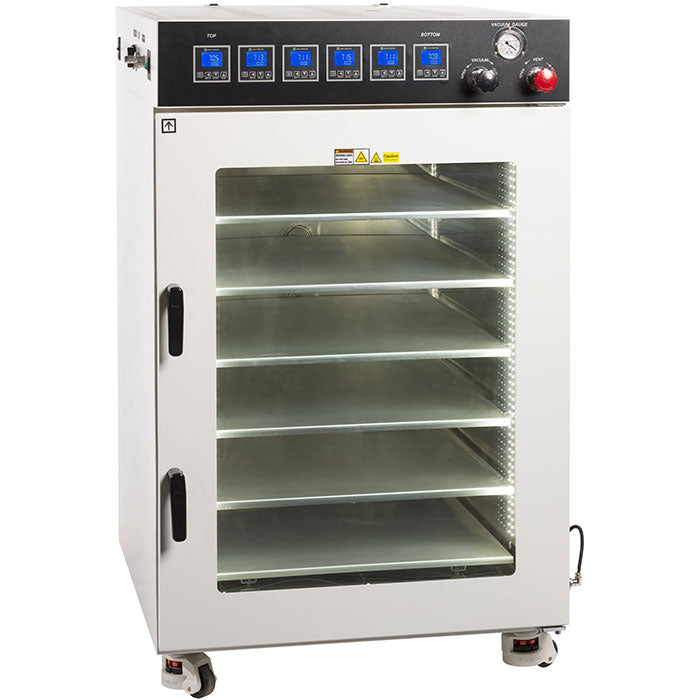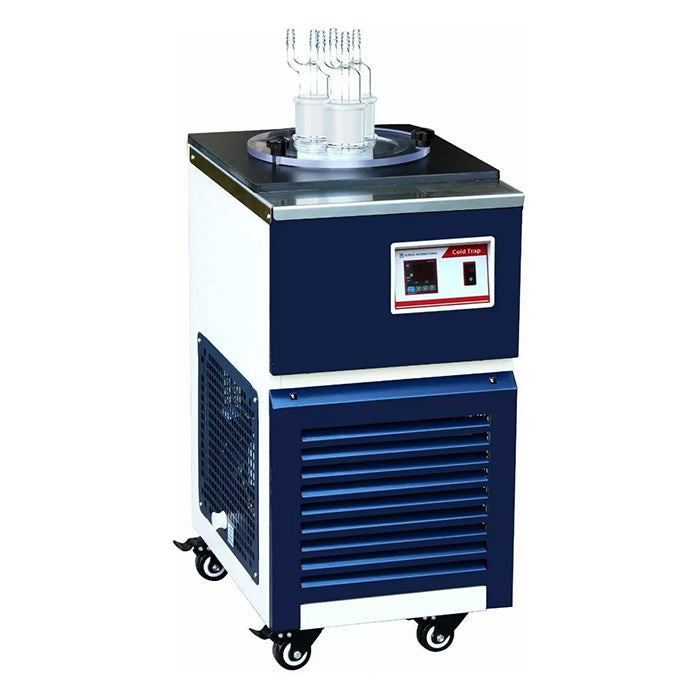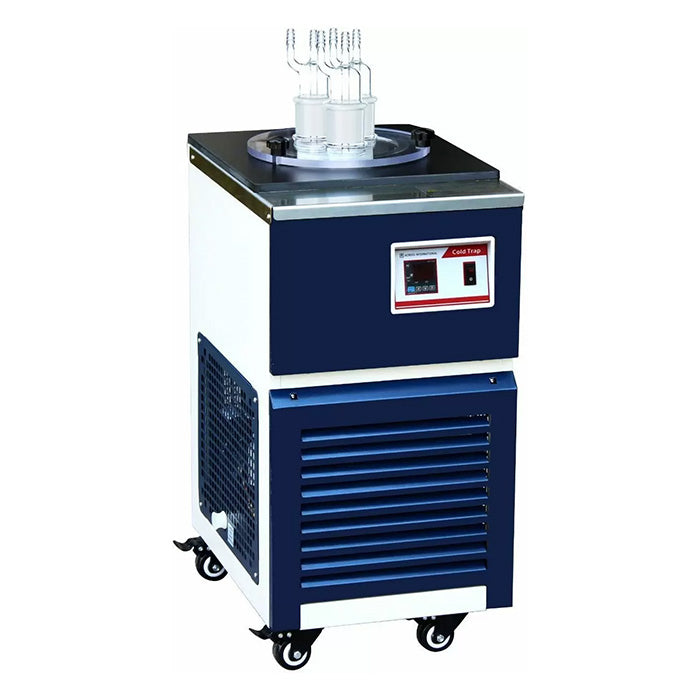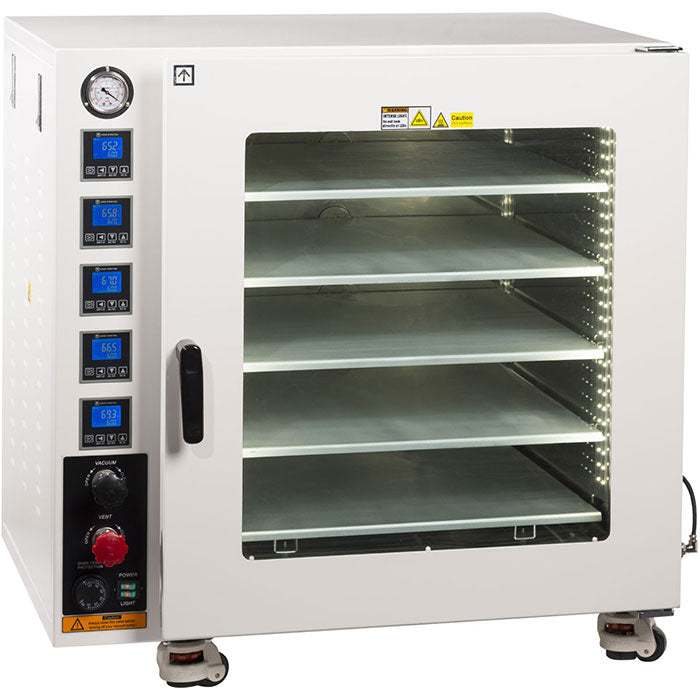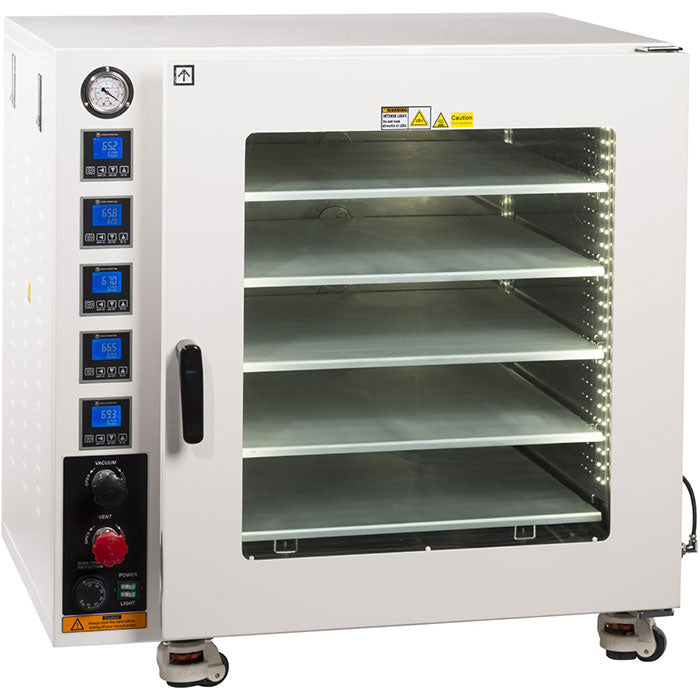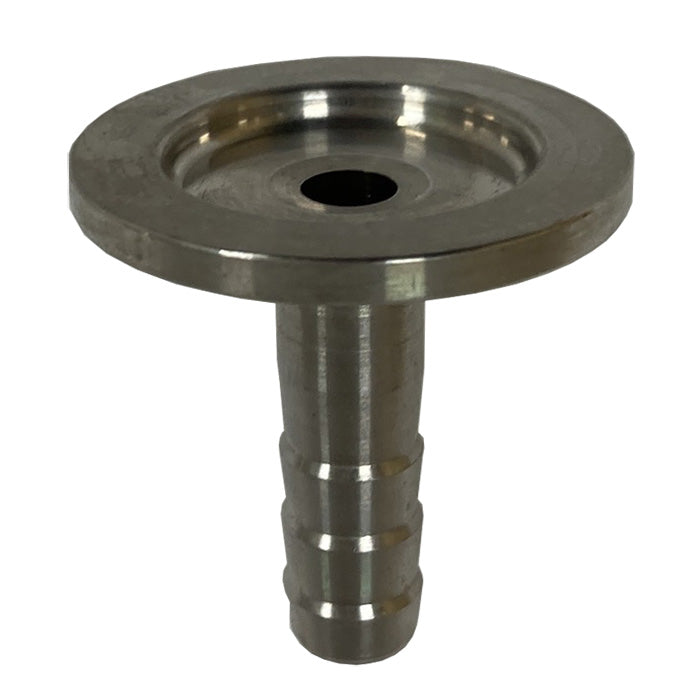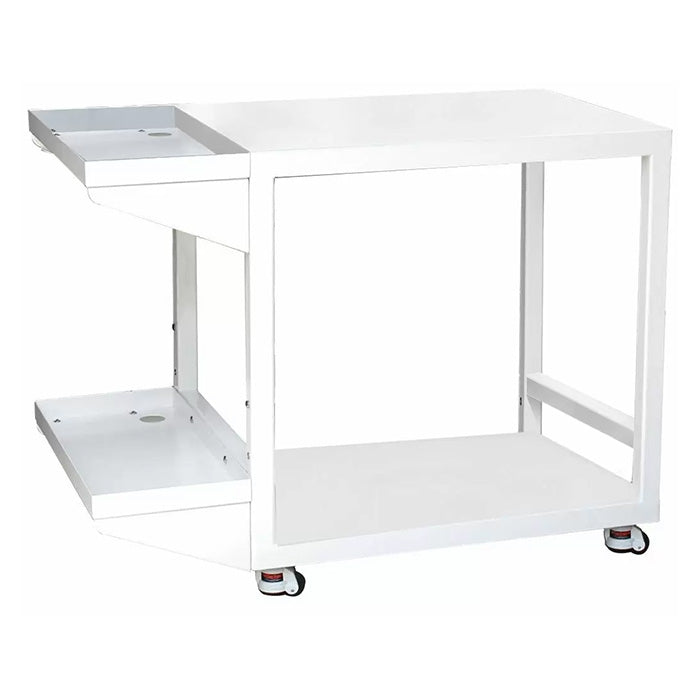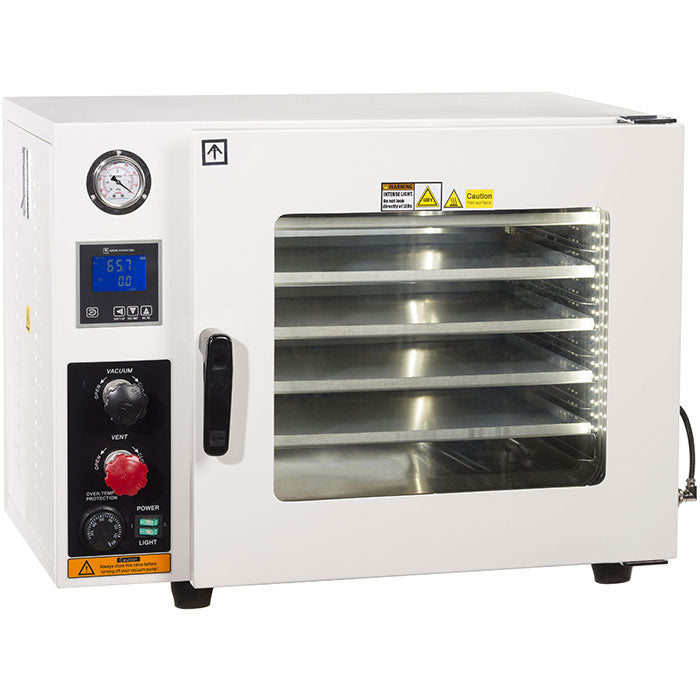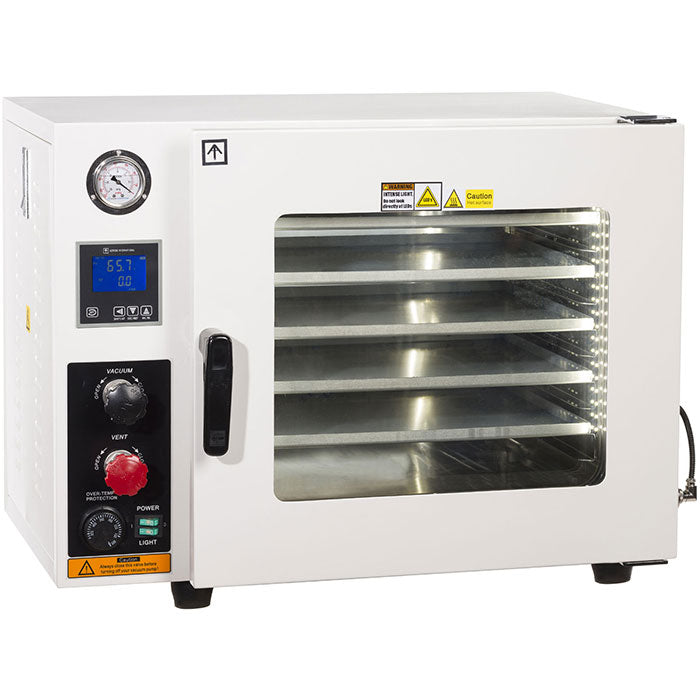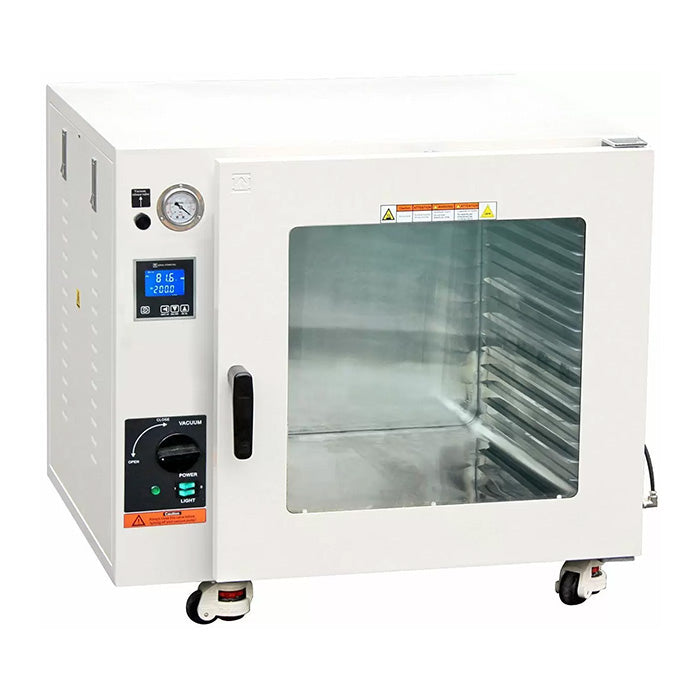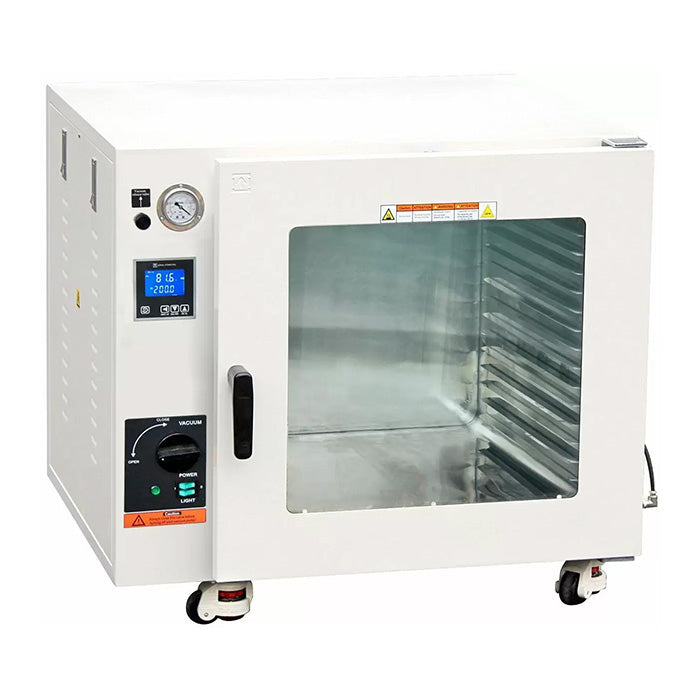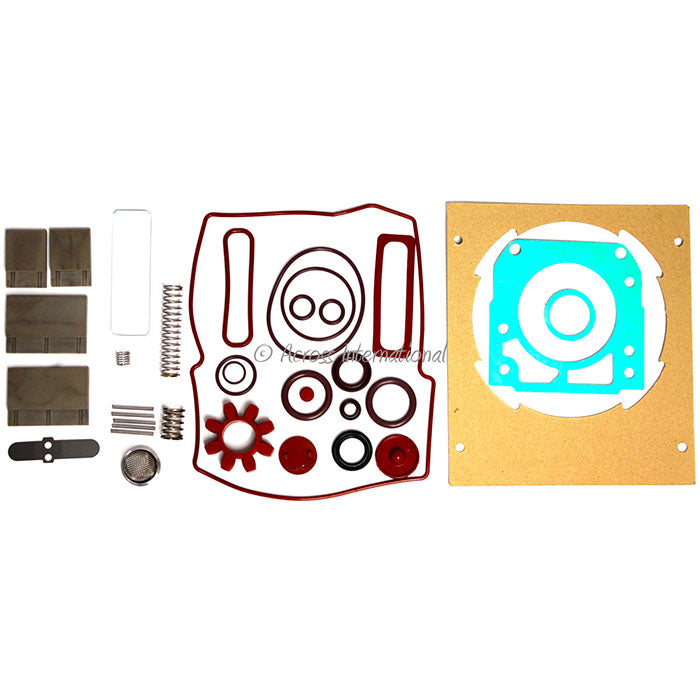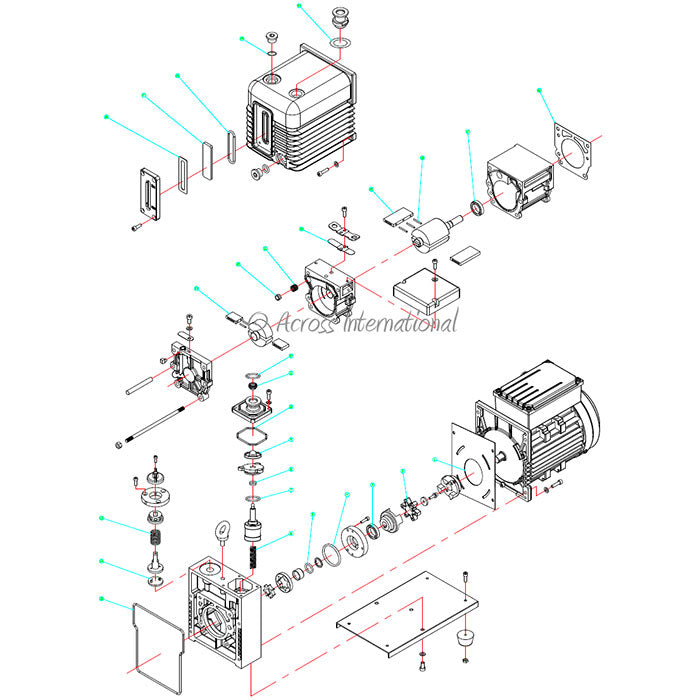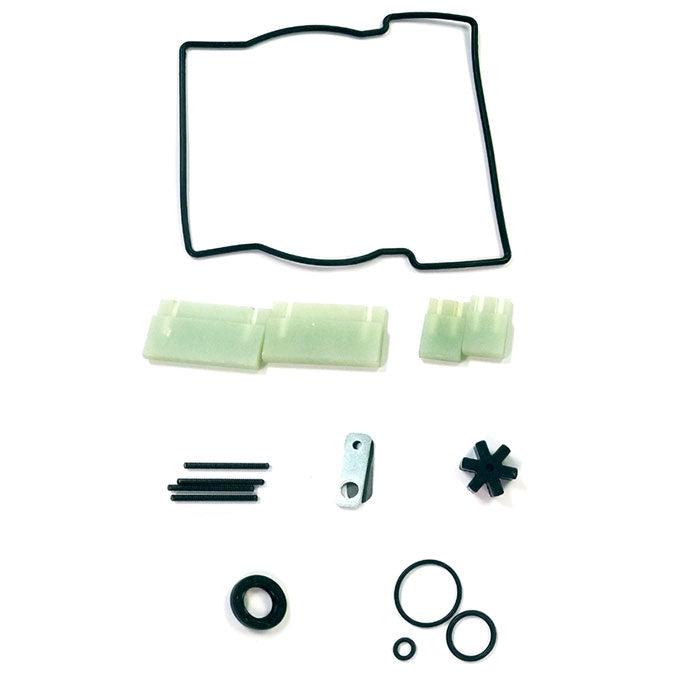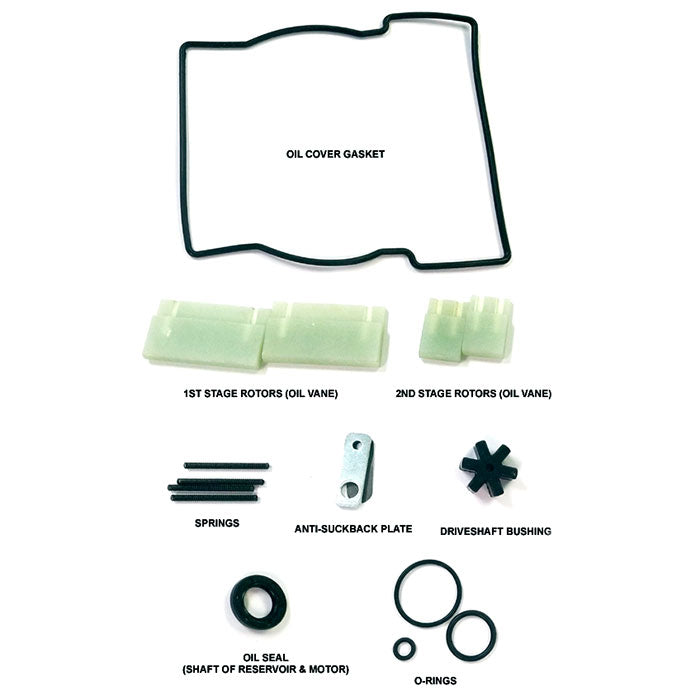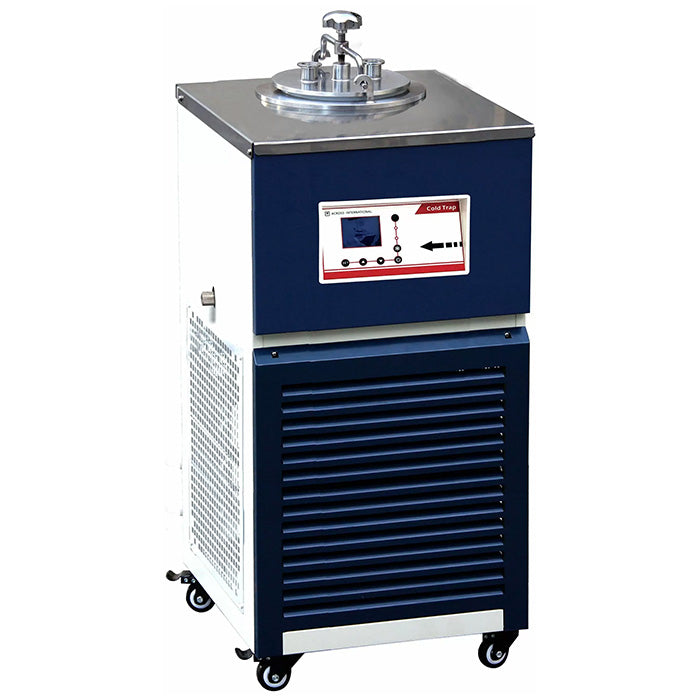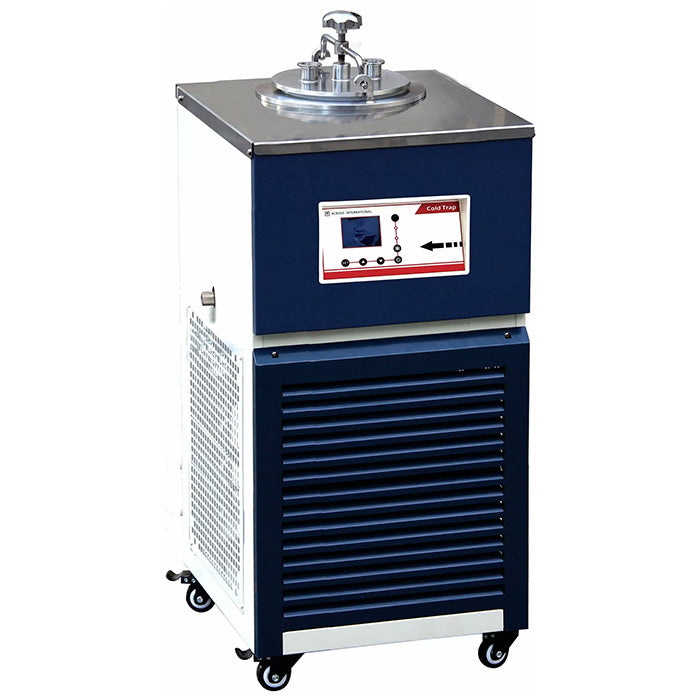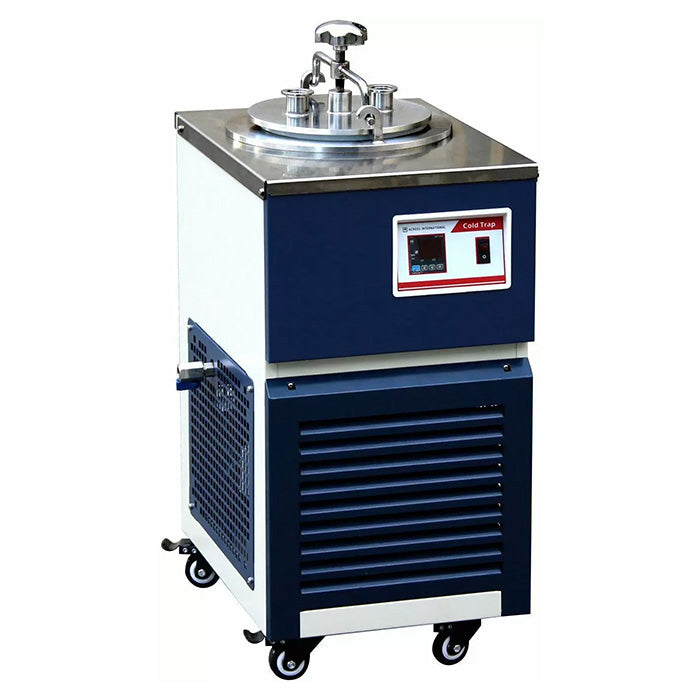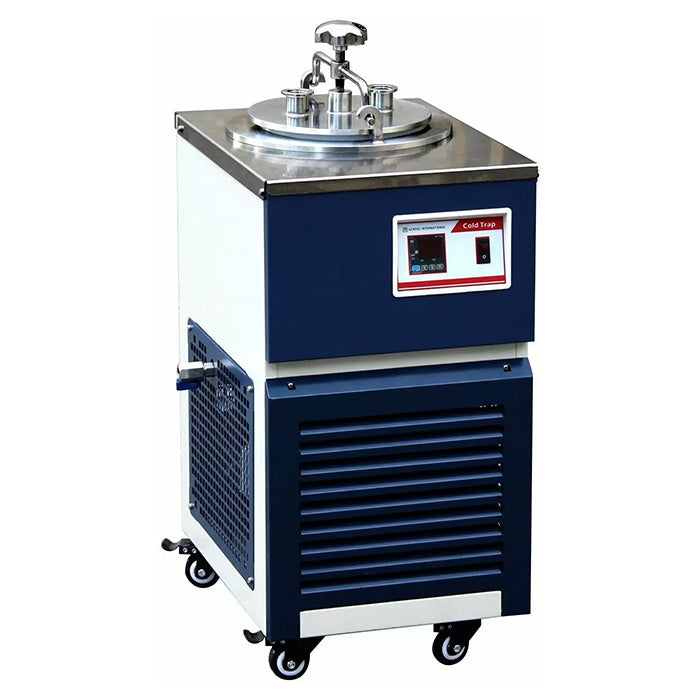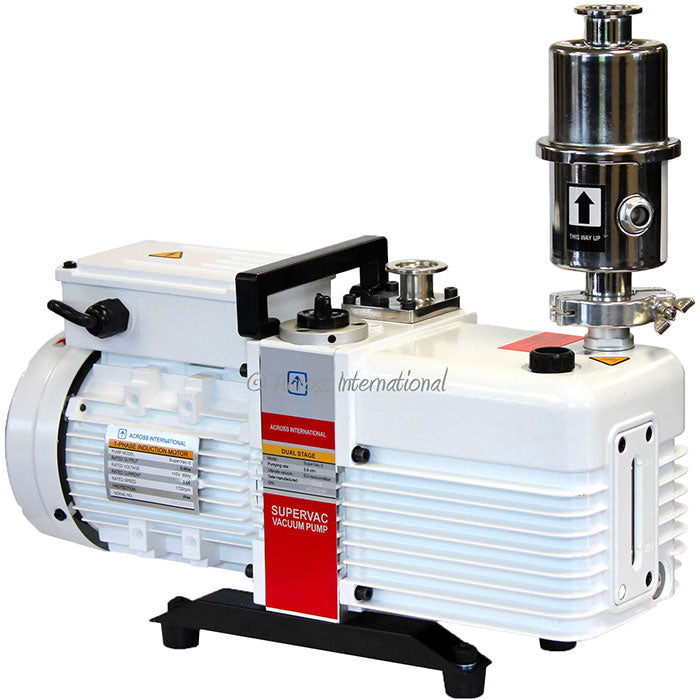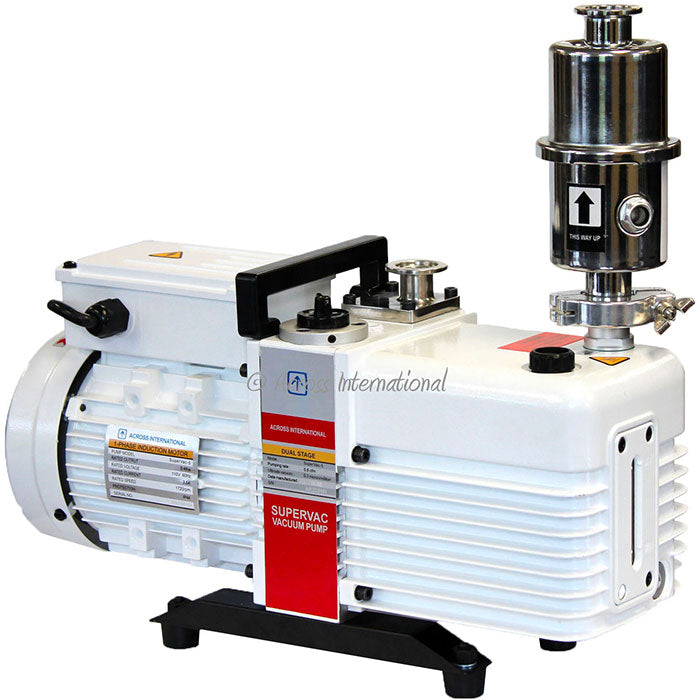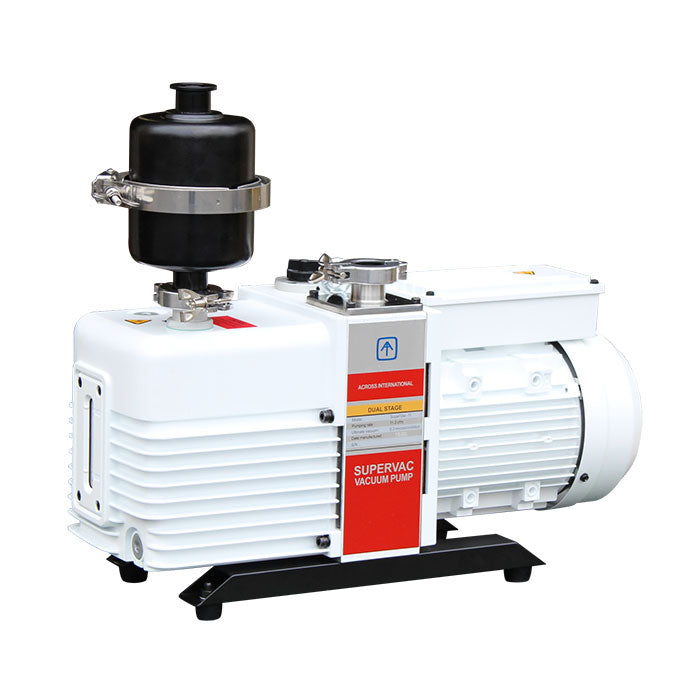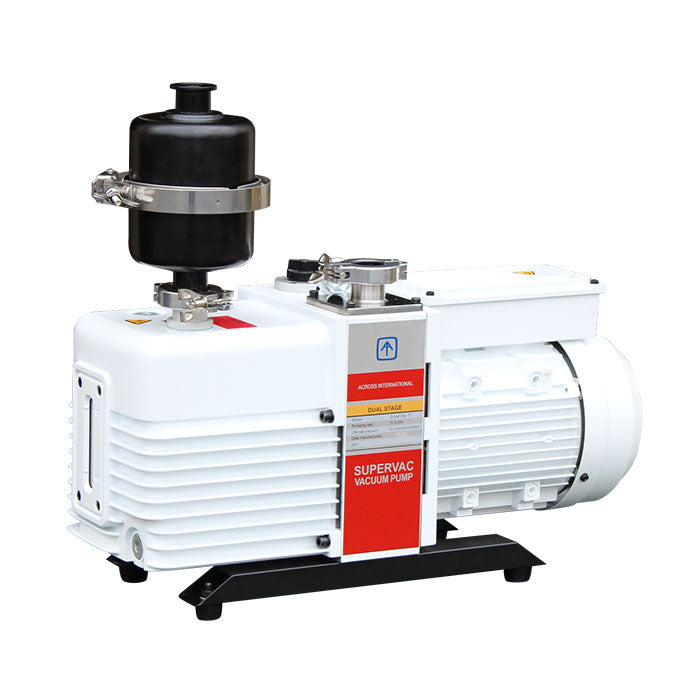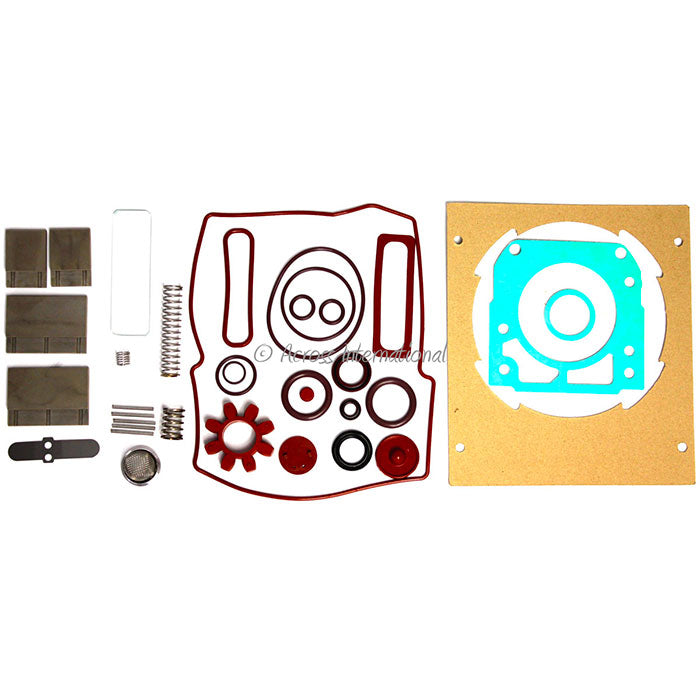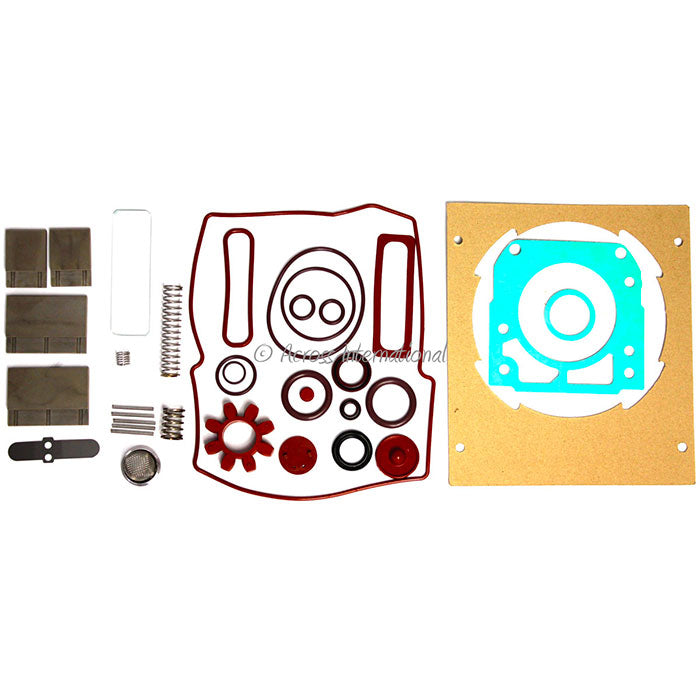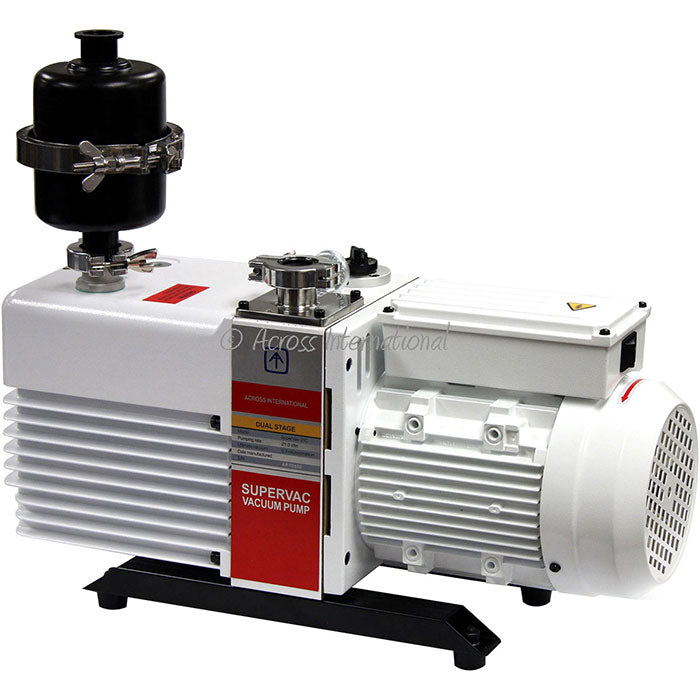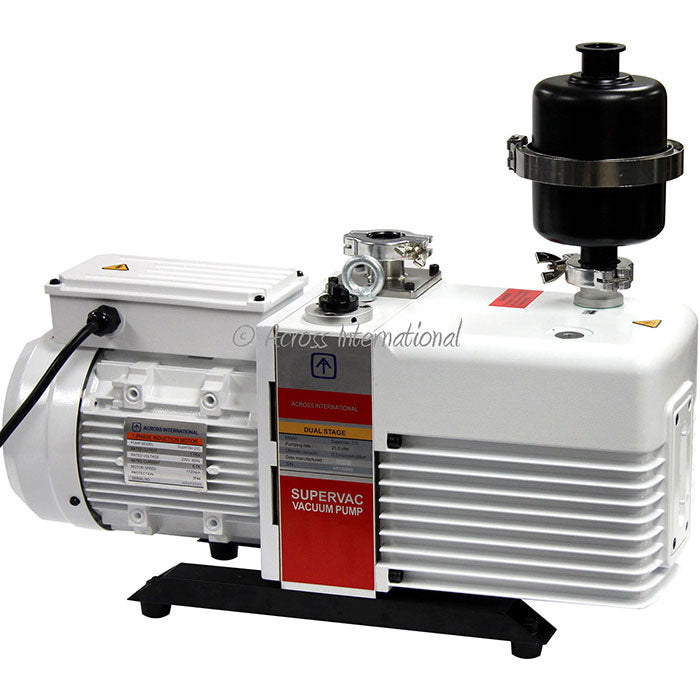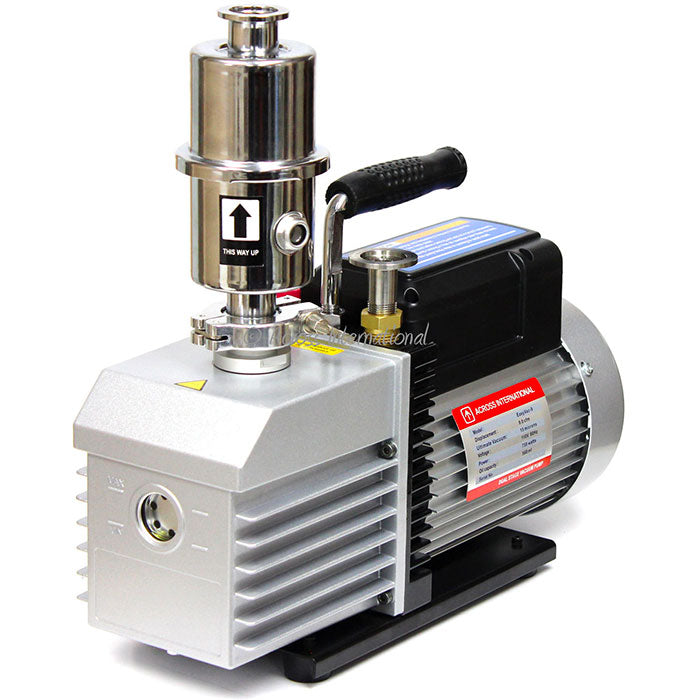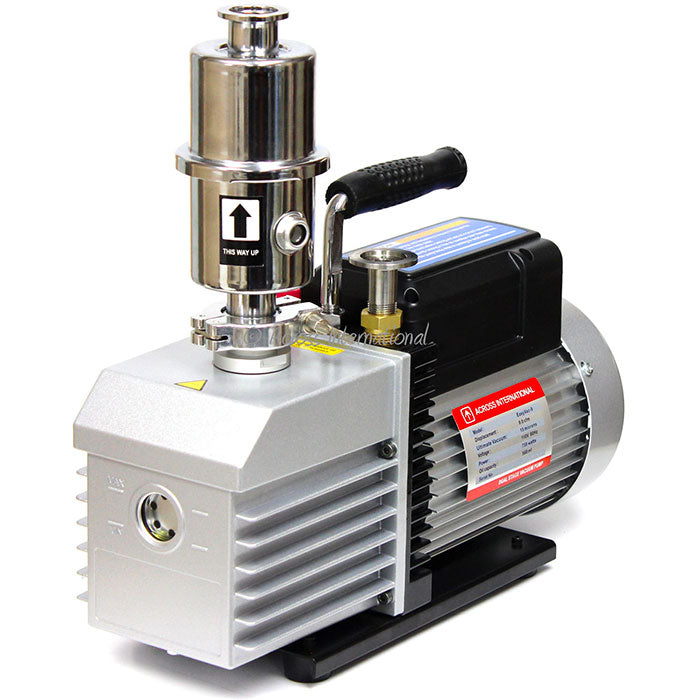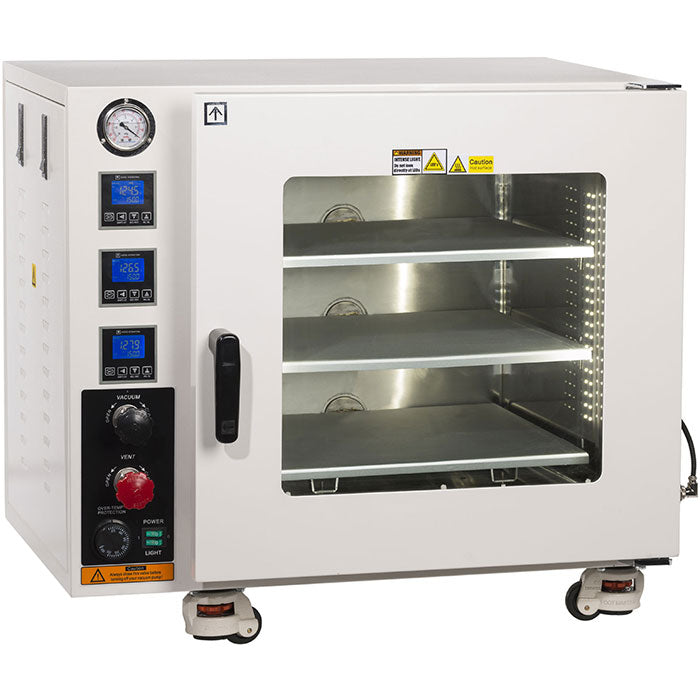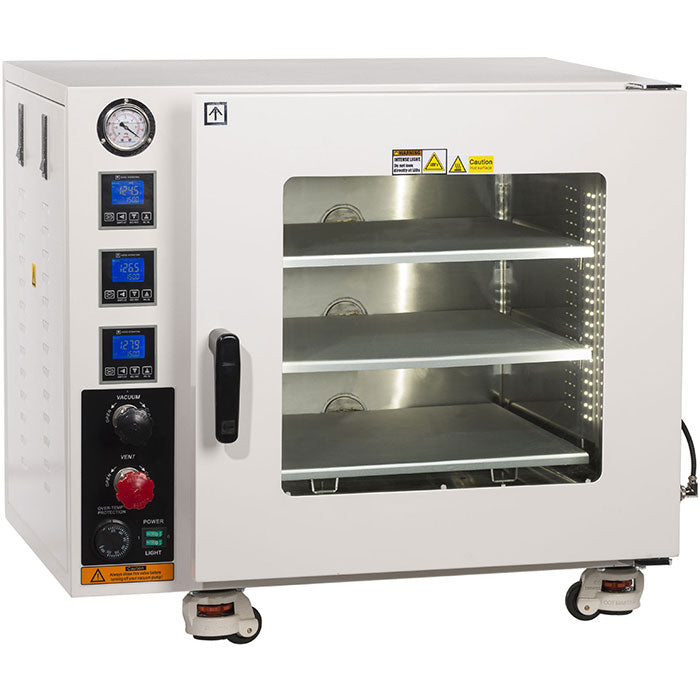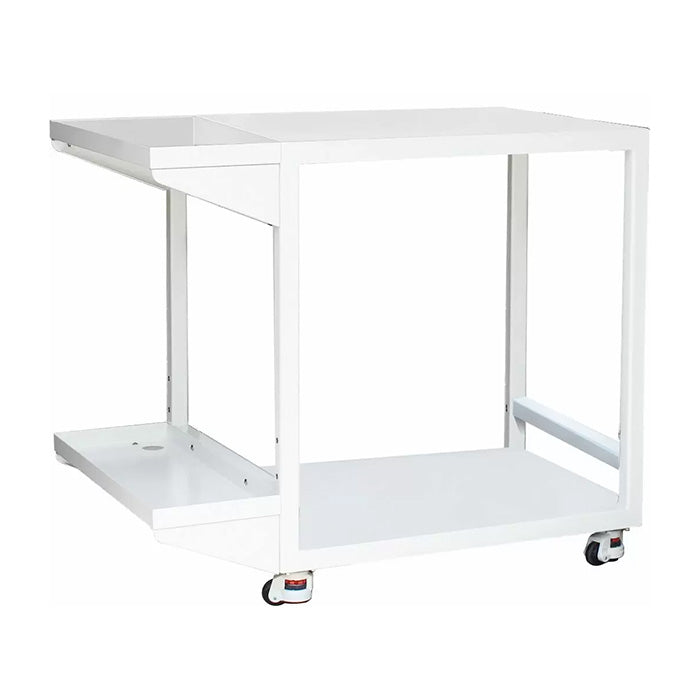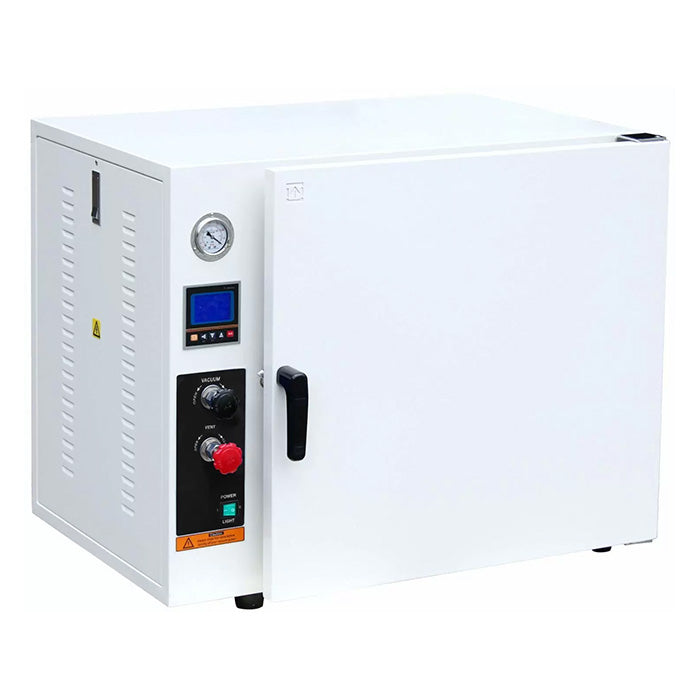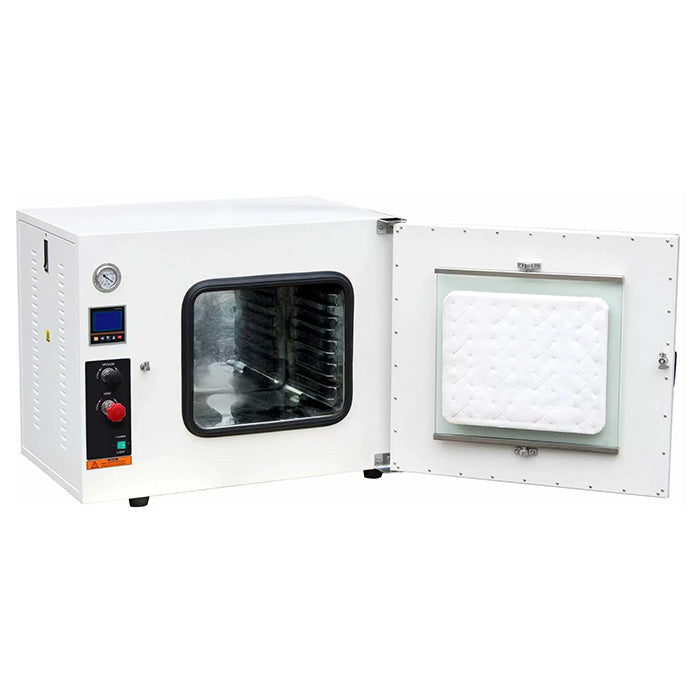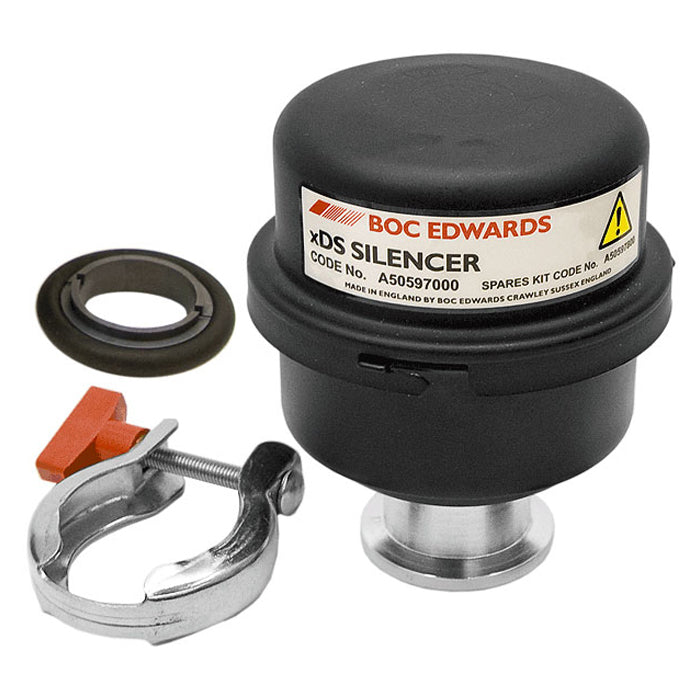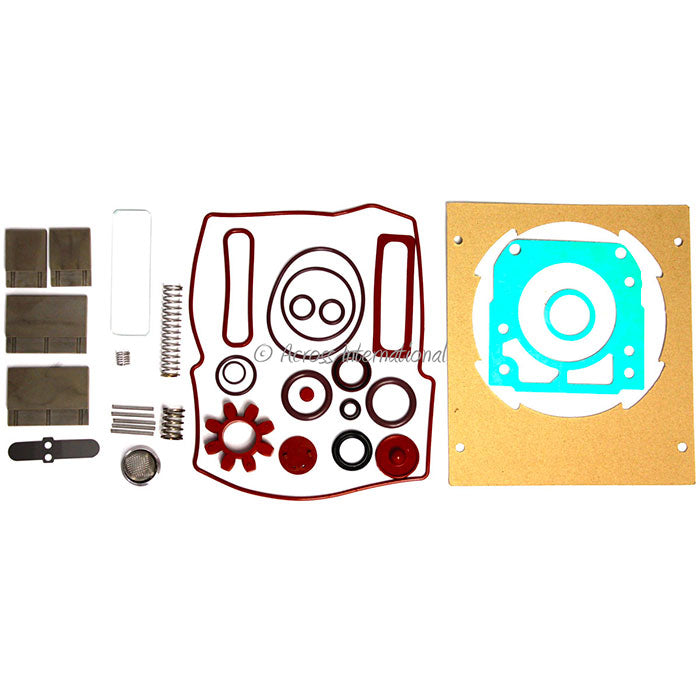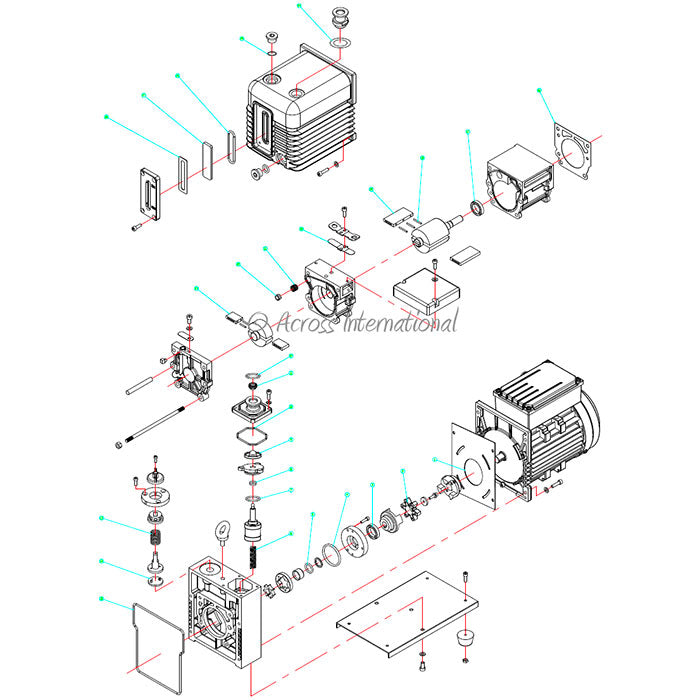What does vacuum purging do?
Vacuum purging is the process of lowering the boiling point to remove residual solvents trapped in a compound without overheating it. This will prevent excessive degradation of the sample, resulting in maximum quality and potency of your concentrate.
This is an especially important process for BHO, since it helps boil away any solvents and impurities you don't want the end-user consuming.
What is a vacuum oven?
A vacuum oven allows the operator to lower the boiling point of solvents while applying a vacuum to it. This allows the solvent to be removed without damaging the sample inside the oven.
With the use of heating elements, vacuum ovens speed up the off-gassing process and will allow the operator to completely remove any residual solvents left in the sample after the initial purge has been done post-extraction.
How do vacuum ovens work?
You will need a vacuum oven pump along with your oven. The goal when using a vacuum oven or purging oven is to remove solvents from extracts while retaining as much of everything else as possible. The best way to do this is by using as little heat as necessary to get the extractions to “melt” and release the trapped solvents.
Typically, this happens between 85 and 105 degrees F. Temperature depends on the viscosity of the extract, which can vary based on the extraction process used, the thickness of the slab, etc. After the initial purge, flip slabs every few hours until solvents are gone over the next 24-48 hours.
How to vacuum purge
You will need a few essential supplies to start purging with this method, including:
- Vacuum Oven/Chamber
- Vacuum Pump
How long should you purge BHO?
The purge will take anywhere from from 24-48 hours. A few things will go into this, such as how much material you are purging, and the level of purity you hope to achieve. You want to make sure your extracts are completely free of solvents, so don't rush this.
